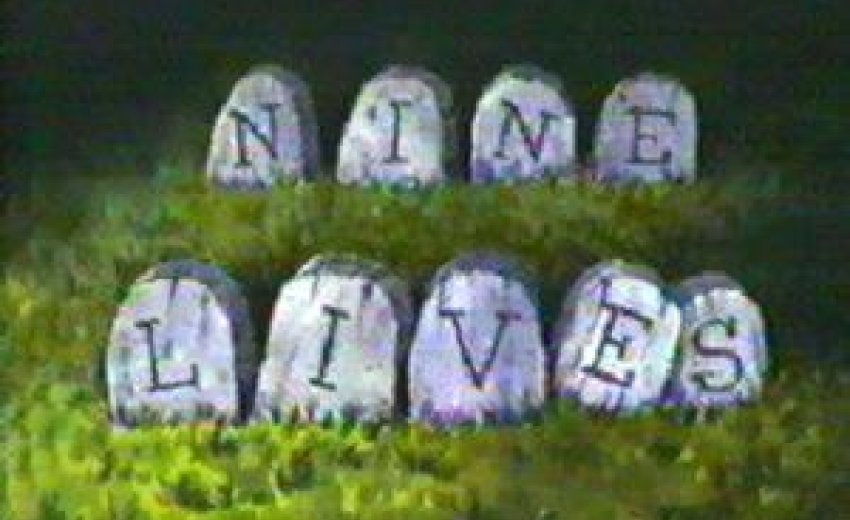 "The cat has nine lives" - This nugget of' old wives' tales hit home just weeks ago.
"The cat has nine lives" - This nugget of' old wives' tales hit home just weeks ago.
I had ended up in a hospital emergency room on a really minor matter. The attending doctor ordered a scan of the belly. When the results came in, the doctor's face grew noticeably longer. Any and all talk of my going home was soon forgotten. I was immediately admitted and many more varieties of doctors came to poke and examine me, each in his own way according to his specialty.
The tests pointed to the possibility of a long dissecting aneurysm in the aorta. The only cogent analogy I can offer is that it is like sitting with a ticking time bomb inside of oneself. The small hospital wanted to transfer me directly to a larger medical center equipped to handle such complex vascular surgery.
I felt like I had been committed to an asylum for the insane.
Finally, five eventful days later, they tried some drastic medical management and sent me home with the warning to quickly pick a master vascular surgeon. My wife and I got busy locating consultants and experts in the field across the country. Since I have taught anatomy for eternity I have enjoyed my share of colleagues who are experienced surgeons and they quickly organized themselves to locate the help I needed.
Many doctors, nurses, students, residents and experts had palpated, probed and prodded my flesh like dead meat. But I was alive and duly certified even though I was told that my life hung by a slender thread. The tentative diagnosis pointed to my reality as hanging poignantly between life and death.
But this wasn't really the first time that I had felt more dead than not — and finally alive, even if eerily so. I pondered over the oft repeated words of T.S. Eliot, “This is the way the world ends; Not with a bang but a whimper.”
(I need to tell you that now matters are not as dire as they seemed just weeks ago. Experts suggested that there may not be an aneurysm at this time and advised rigid medical management but not radical surgery.)
Looking back at my slightly chaotic life this is not the first time I have faced my own mortality and, since I have survived it, certainly it won't be the last. There have been times when my back was to the wall and no way out appeared in sight, except as a miracle.
I remember a little over 22 years ago in August 1990 when my heart stopped and that too in the ICU of a major university hospital. So, I died twice then on the same day a few hours apart and doctors brought me back to life each time. Then too, as now, I wondered why I had been granted a new lease on life. The unexpected gift must have new meaning and a new dimension and direction – a new purpose to life
I look back and I see that nothing in life ever is a linear trek but has many an unexpected turn. Life truly is “full of rude awakenings” as opined a cartoonist - I think it was Charles Shultz, the maker of “Peanuts.” — Life often turns on a dime.
Such moments take one far from the path one is on and often the turns and squiggles appear as blind alleys - cul-de-sacs – misty, veiled caves through which one may not see. There are so many of these blind turns in life.
I remember an earlier time when the tide turned and my interest in Sikhi mysteriously awakened; it was not something I was actively chasing or seeking. I didn't even know I needed it, but surely every time it led not to a prayer for a miracle but to an inner spiritual calm; a reawakening and renewal
Since there is no way out of many such corners in life perhaps what we need then is a change in our mindset and to regard such circumstances as what Sikh parlance terms “Hukum” and rejoice in them. To my mind, Sikhi is the best exposition of this frame of mind that is captured also by the early Greek philosophers whose prayer went somewhat thusly: “God, grant me the courage to change the things I can, the serenity to accept what I cannot change and the wisdom to know the difference.” Let there be no question that the hardest part is the third one – the wisdom to know the difference; which battles to fight or die for, and which battles to turn away from, remains a difficult choice.
To cultivate this mindset and to live in the moment fully is to me the definition of what Sikhi labels “Hukum,” the Divine will or way; walking in the shadow of the Lord as Christianity puts it. To me this best captures God's unlimited presence in our lives as well as human free will with its limitations.
When one thinks on the many blind corners that take one on a new unforeseen path; doesn't this take one to Robert Frost’s words “Two roads diverged in a wood, and I took the one less traveled by?”
Spring follows winter as surely as life fills the void of death and day follows night. Light and shadow alternate as do joy and sorrow. They make life as it is.
Says Guru Granth (p. 149) “Sukh dukh doay dar kaprhay pehray aaye manukh” – comfort and sorrow are like two robes that each of us must alternately wear in life.
When I came to the United States in 1960, the path seemed mysterious, and my planning for it nil. It was as if I had walked into a palatial new house that had an open door and a “Welcome” sign hanging on it.
There have been so many such life affirming and life changing events that I now look at them neither so much as accidents nor as having resulted from any conscious planning on my part and from my effort, but rather as if my life is being directed by events and a will beyond mine.
It was a happy circumstance, not any great talent of mine that brought me to this land. And when I found myself hopefully pursuing research training in graduate school and turning away from the lure of the lucre of clinical practice it was on a lark. And as the tide turned to mysterious stirrings of interest in Sikhi it was something I was neither actively chasing nor seeking.
Every new step was and remains a new lease on life. And now I no longer plan consciously where the journey will take me. I simply leave it to the Guru. Whatever will be will be good is not a fatalistic view of life but is a peaceful and hopeful one.
I see that there is excellent reason that today I feel like the mythical phoenix arising from its own ashes. Gurbani is replete with references to renewal and rebirth from ashes and defeat; in fact, this is what Sikh history and teaching are all about. The Guru promises renewed courage and freshness as dead wood that can blossom anew (Guru Granth, p 11) “Gur parsaad param pudd payaa sookay kaast hariyaa.”
A cat has his proverbial nine lives, and surely I have had no less.
April 5, 2013






